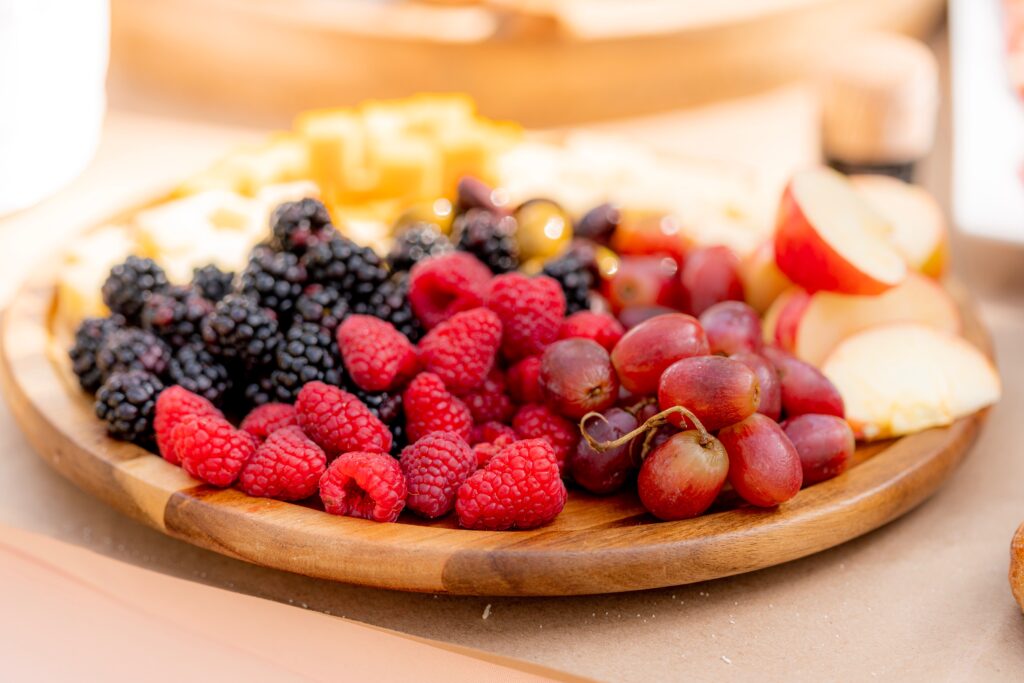
Summer brings long, sunny days and a sense of vacation and conviviality. It’s also the perfect season to indulge in a wide variety of fruits. Apricots, peaches, melons, watermelons, cherries, and figs are just a few of the many delightful options that can be enjoyed fresh or incorporated into various recipes such as tarts, sorbets, clafoutis, and desserts to share (or savor alone!).
In this article, we invite you to explore the fruits of summer, their advantages, and how to choose them. Enjoy reading and have a fantastic summer!
Why Choose Seasonal Fruits?
The concept of “seasonality,” which involves consuming produce during its peak season, is more than just a passing trend. Opting for seasonal fruits is a wise decision due to several reasons related to quality, economy, and the environment.
When you consume fruits in their respective seasons, you can fully enjoy their taste and nutritional value. Fruits that are grown under optimal conditions of light, temperature, and humidity and picked when fully ripe not only taste better but also contain higher levels of vitamins and minerals. Additionally, during the summer months, our bodies require more water, and nature offers summer fruits that are naturally rich in water content, helping to meet this hydration need.
In these economically vulnerable times, consuming locally and seasonally grown fruits helps reduce transportation and packaging costs and minimizes fruit import taxes. It’s an ethical gesture that supports local producers and strengthens the local economy.
From an environmental perspective, choosing seasonal fruits is an environmentally responsible action. Seasonal cultivation takes place under natural conditions favorable to specific fruits. In contrast, out-of-season fruits often require greenhouse cultivation with artificial light, heat, and sometimes additional chemical substances and pesticides. This method is not ideal for the environment or the quality of the final product. By eating locally produced fruits, you contribute to reducing CO2 emissions from transport and overall pollution.
What Are the Fruits of Summer?
When we think of summer, we envision sunny days, warmth, relaxation, and conviviality. We also associate this season with delicious fruits. Here’s a monthly breakdown of the fruits you can enjoy during the summer:
Fruits of July:
- Cherries and forest fruits such as strawberries, raspberries, redcurrants, blackcurrants, blackberries, and blueberries.
- Apricots, peaches, nectarines, and various plum varieties.
- Refreshing melons and watermelons.
Fruits of August:
- Refreshing fruits like melons and watermelons.
- Red fruits including raspberries, blackcurrants, blackberries, and blueberries.
- Stone fruits such as nectarines, peaches, and apricots.
- Delicious berries like mirabelle plums, Deutsche, and figs.
- The first apples and pears of the season.
Fruits of September:
- The last chance to enjoy melons and red berries.
- Grapes, apples, and pears marking the transition to the next season.
Benefits of Summer Fruits:
As mentioned earlier, staying well-hydrated during summer is crucial, and consuming seasonal fruits is a delicious way to meet some of these hydration needs (alongside drinking plenty of fluids). Just like throughout the year, summer is a time when we require energy, vitamins, and minerals, and consuming fresh summer fruits can help fulfill these requirements. Let’s explore some of the benefits offered by specific summer fruits:
Melon
With a water content ranging from 84% to 92%, melon is one of the most hydrating fruits. It provides a good amount of beta-carotene, vitamins C and E, and minerals like potassium, selenium, and zinc.
Watermelon
Watermelon is another hydrating fruit, containing approximately 91% water. In addition to its hydrating properties, watermelon is a source of fiber, vitamins C and B6, potassium, magnesium, and lycopene—an antioxidant compound. Despite its sweetness, watermelon is low in calories, with less than 40 kcal per 100 g.
Strawberries
Although strawberry season begins in spring, they are still enjoyed during early summer. Strawberries are low in calories (39 kcal per 100 g) and rich in vitamin C, folate, and potassium.
Cherries
Cherries are a delightful summer fruit and a great source of beta-carotene, vitamin C, and potassium. Morello cherries, in particular, are especially rich in beta-carotene.
Stone fruits
Yellow and orange stone fruits are packed with beta-carotene, with apricots being the richest source. They also contain vitamin C and various minerals such as potassium, magnesium, phosphorus, and iron. These fruits are convenient, low in calories (around 45-50 kcal per 100 g), and delicious.
Plums
Plums are nutritionally beneficial fruits, providing vitamins A, C, E, and group B, along with several minerals like potassium, magnesium, calcium, and phosphorus. Varieties such as Mirabelle and Reine-Claude may have slightly higher energy content, but they remain nutritious and low-calorie options to enjoy during the summer. Prunes, and dried plums, are particularly high in fiber (around 5 g per 100 g), contributing to normal intestinal function.
Bilberry
Bilberry contains numerous phenolic compounds with antioxidant properties. It helps regulate carbohydrate, lipid, and protein metabolism and promotes blood circulation in capillaries. Additionally, bilberry is known to regulate accelerated intestinal transit.
Blackcurrant
While blackcurrants may be less commonly consumed than other forest fruits, they offer various benefits. Blackcurrants enhance resistance to stress, exertion, and unfavorable environmental conditions. They also support circulation, particularly within the venous system.
How to Choose Summer Fruits
When selecting summer fruits, engage your senses—sight, touch, smell, and sometimes taste. Here are some tips for making the best choices:
- Melons: Ripe melons have a strong fragrance. The rind should be supple, and if the stalk is peeling, it indicates ripeness. Opt for slightly firm melons for juicier fruit.
- Watermelons: Look for smooth, shiny rinds. A young spot on the surface indicates ripeness. If pre-cut, ensure the flesh is red throughout for the best taste.
- Peaches, Apricots, and Nectarines: Use all your senses. Look for beautiful orange tones with hints of red, which vary depending on the variety. Check for spots or bruises on the surface. Ripe fruits have a fragrant aroma and a soft, uniform feel. Avoid extremely soft or very hard fruit.
- Strawberries: Enjoy them when ripe. Look for strawberries that are highly fragrant, shiny, and evenly colored (varies with the variety). Avoid crushed strawberries at the bottom of the tray.
- Cherries: Choose bright, unbruised cherries with vibrant colors (red, yellow, or black). The stem should be firmly attached, indicating freshness and quality.
- Other Berries: For fruits like blueberries and blackcurrants, check for a pleasant aroma, indicating ripeness. Ensure the fruits are intact without any bruises. Examine the bottom of the container to avoid crushed or wilted fruit.
Summer fruits offer a delicious way to enjoy daily treats while benefiting from nature’s bounty of vitamins, minerals, antioxidants, fiber, and hydration. So, when you think of summer, envision sunshine, vacations, and the delightful seasonal fruits that await.


